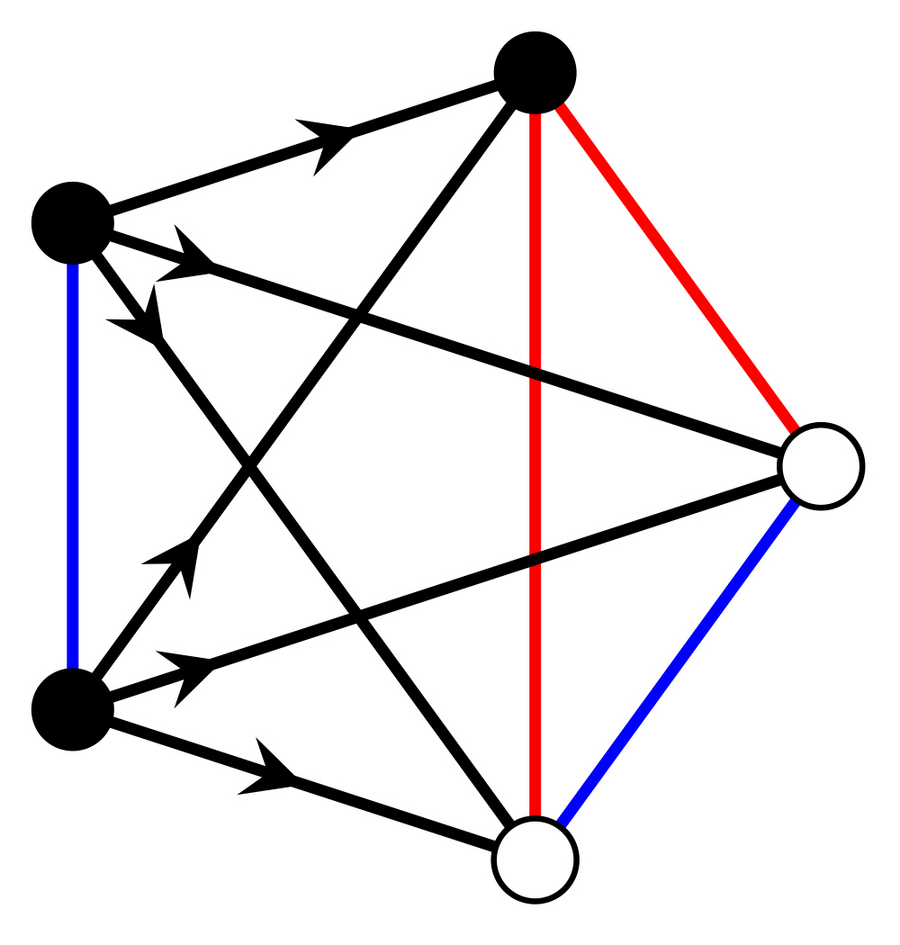
Example of ecological interactions of five species, including competitive (red), mutualistic (blue), and predator-prey (black arrow) interactions. © Yu Meng et al., Cell Systems 2025
What are the general principles that determine whether species can coexist stably in an ecological community? This has been a central question of theoretical ecology and complex systems theory. Random matrix theory reveals general patterns in how species interactions, be they competitive, mutualistic, or predatory, affect ecosystem stability. But stability also depends on how these interactions are arranged in a network, which random matrix theory cannot fully capture.
Researchers at the Max Planck Institute of Molecular Cell Biology and Genetics (MPI-CBG), the Max Planck Institute for the Physics of Complex Systems (MPIPKS), and the Center for Systems Biology Dresden (CSBD) have developed a new approach to address these questions, based on an exhaustive analysis of all small interaction networks (of up to five species). Yu Meng, Szabolcs Horvát, Carl Modes, and Pierre Haas analyzed hundreds of thousands of networks numerically and established a mathematical theorem relating the possibility of stability of coexistence in a community to its subcommunities. The authors discovered that even small changes to the network of ecological interactions hugely affect the possibility of stable coexistence.
“We also found that a very small fraction of networks are what we named ‘impossible ecologies’, in which coexistence is simply not possible,” says Carl Modes.
“Our study highlights that it is really the full structure of the network of interactions that determines the stability of ecosystems. Our results can therefore help us to better understand how ecosystems will respond to environmental changes,” summarizes Pierre Haas.
The authors are now collaborating with the mathematics research groups at the MPI-CBG and the CSBD to extend their numerical approaches and results to larger ecological communities using new mathematical tools.
Meng, Yu, Szabolcs Horvát, Carl D. Modes, and Pierre A. Haas. Impossible Ecologies: Interaction Networks and Stability of Coexistence in Ecological Communities. Cell Systems, June 2025, 101297. https://doi.org/10.1016/j.cels.2025.101297.